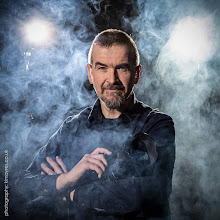Storytelling, Shortcuts and Stereotypes - and Episode 34 of Understanding Photography with Kim Ayres
About 10 minutes into this episode of Understanding Photography with Kim Ayres, I go off on a slight, but relevant, tangent about how going on a storytelling workshop had a profound influence on my understanding of the way people interact with each other. And I wanted to expand on that thought a bit.
In essence, we make sense of the world through creating, and overlaying, a whole series of stories and narratives onto the people and events around us.
As such, we rarely see other people as the rich, complex, multi-layered beings they are, but tend to assign shortcut character descriptions to them, often based on little more than 2 or 3 obvious characteristics.
And not infrequently judgements are made based on only a single characteristic – colour of skin, disability, accent, political leaning etc. We only have to look at the divisiveness of the current political landscape to see how whole swathes of people are written off, ignored, or seen as ignorant and evil.
It's perhaps not surprising we are quick to create stereotypes and act on them in an instant. Our primal ancestors needed this ability to survive.
Those with a tendency to say, “Who is this person heading towards me in a strange outfit with a club raised above their head as though ready to strike? Perhaps they are just expressing a greeting in a culturally different way. I should just head over and say hello...” didn't tend to survive long enough to pass on their genes.
As has been said before, we are the descendants of the paranoid and the obsessive compulsives.
As a portrait and narrative photographer I exploit these mental shortcuts we make to create images where people can assume they know more about the person or scene before them, because of the outfit, props or expressions the subject is displaying.
If I want someone to come across as intellectual, then I can have them peering over the top of their glasses. Look like a leader? Have a stern expression and shoot the camera from a lower angle looking up so they appear, literally, above us. Pirate? Stick on a tri-corner hat, and probably an eye patch too.
The more experienced writers know how to enrich stories, or even throw their readers off-guard, by introducing unexpected character traits to people we thought we'd already summed up.
The thing is, the more levels of complexity we know about a person, the easier it is to start empathising. Even if we dislike an action they take, we might still understand why, and that makes it harder to hate them.
This is why those who would exploit our emotions for political or profitable ends will so often reduce “the other” to a single, undesirable characteristic, which supposedly says everything we need to know and all other aspects are irrelevant by comparison.
And just as surely they will reduce us to a single favourable characteristic so we feel we are on the right side.
Until, that is, it is more profitable to define us as the other instead...
If you're interested in reading more about seeing the world in narratives, here are a few blog posts I wrote several years ago on the subject
We Are The Authors of Our Own Story
Chalk Lines
Who's The Baddy?
In the meantime, here's last night's podcast...
---
0.00 - What's coming up
8.40 - The Storyteller - photographing Tony Bonning in the woods at sunset
21:57 - My "workhorse" lens
23:30 - Critique of images submitted to the Facebook Group, "Understanding Photography with Kim Ayres"
1:53:44 - Coming up next week
1:55:12 - End
If you found this interesting/useful/entertaining, then please consider supporting these podcasts and blog posts via buymeacoffee.com/kimayres
Also consider subscribing to my YouTube channel - https://www.youtube.com/kimayres – to help me build the numbers.
And, or course, if you would like to submit a photo for feedback, or
just ask a photography related question, then do join my
Understanding Photography with Kim Ayres
Facebook group and I will put it into the following podcast:
https://www.facebook.com/groups/240842990388815/






Post a Comment